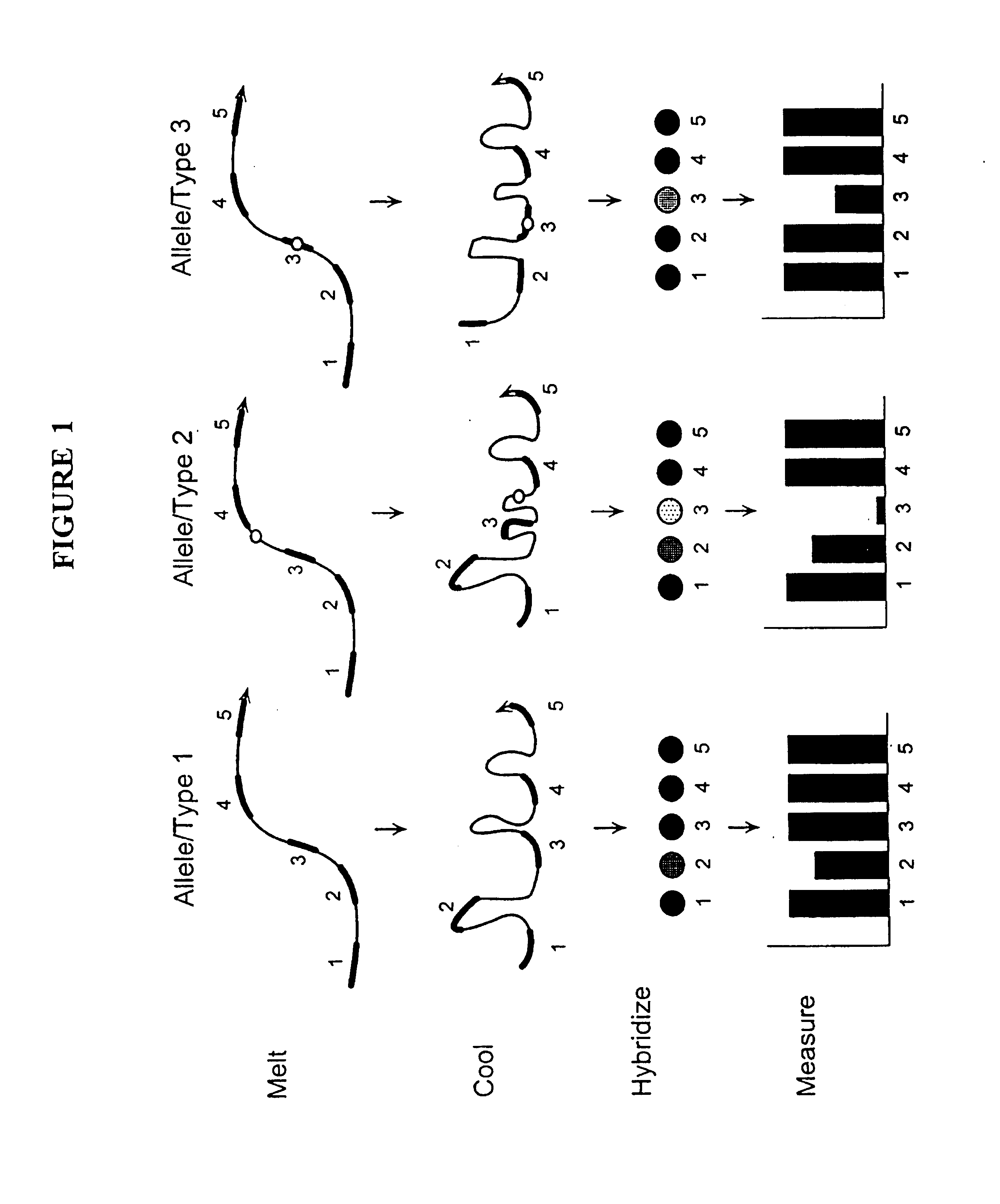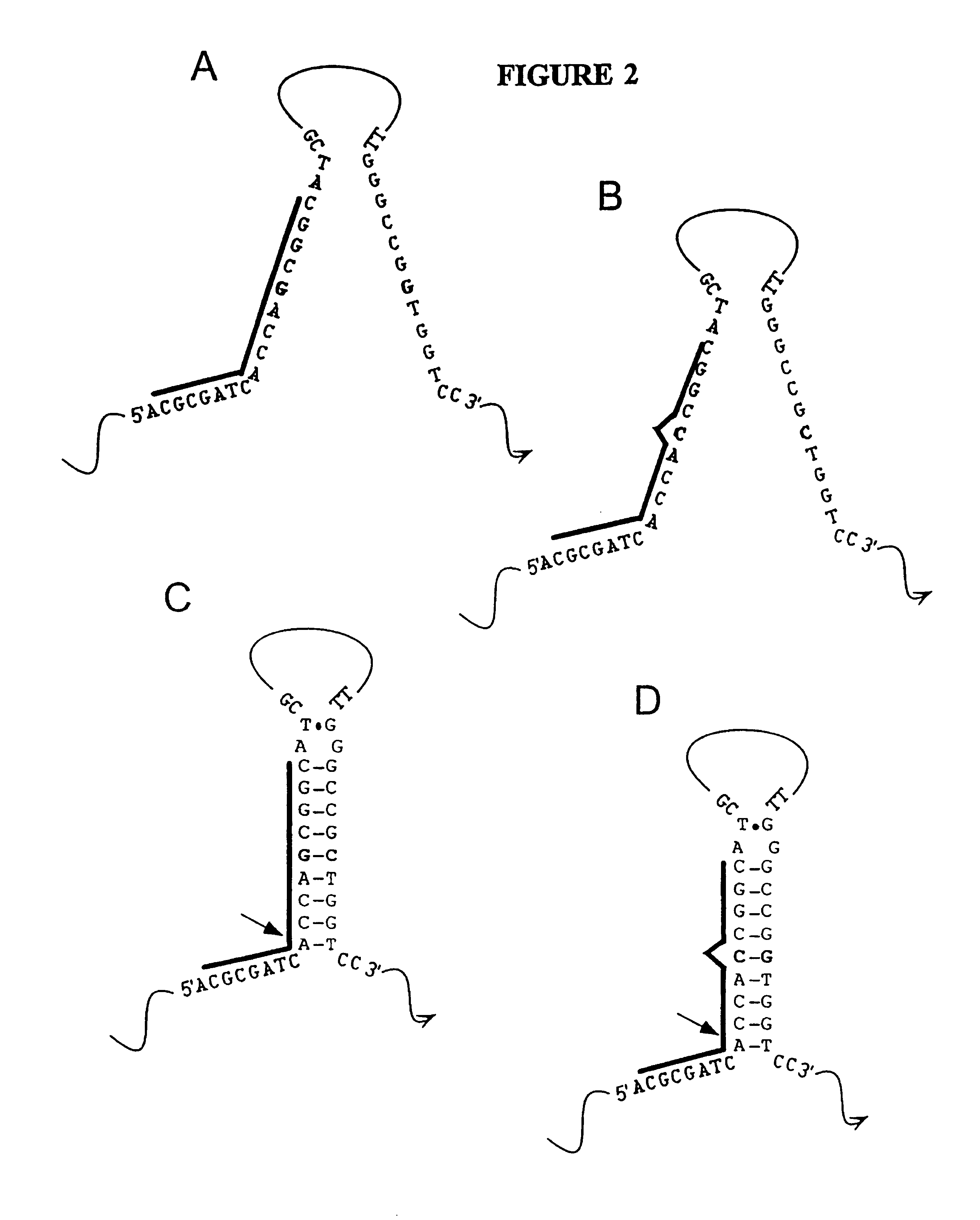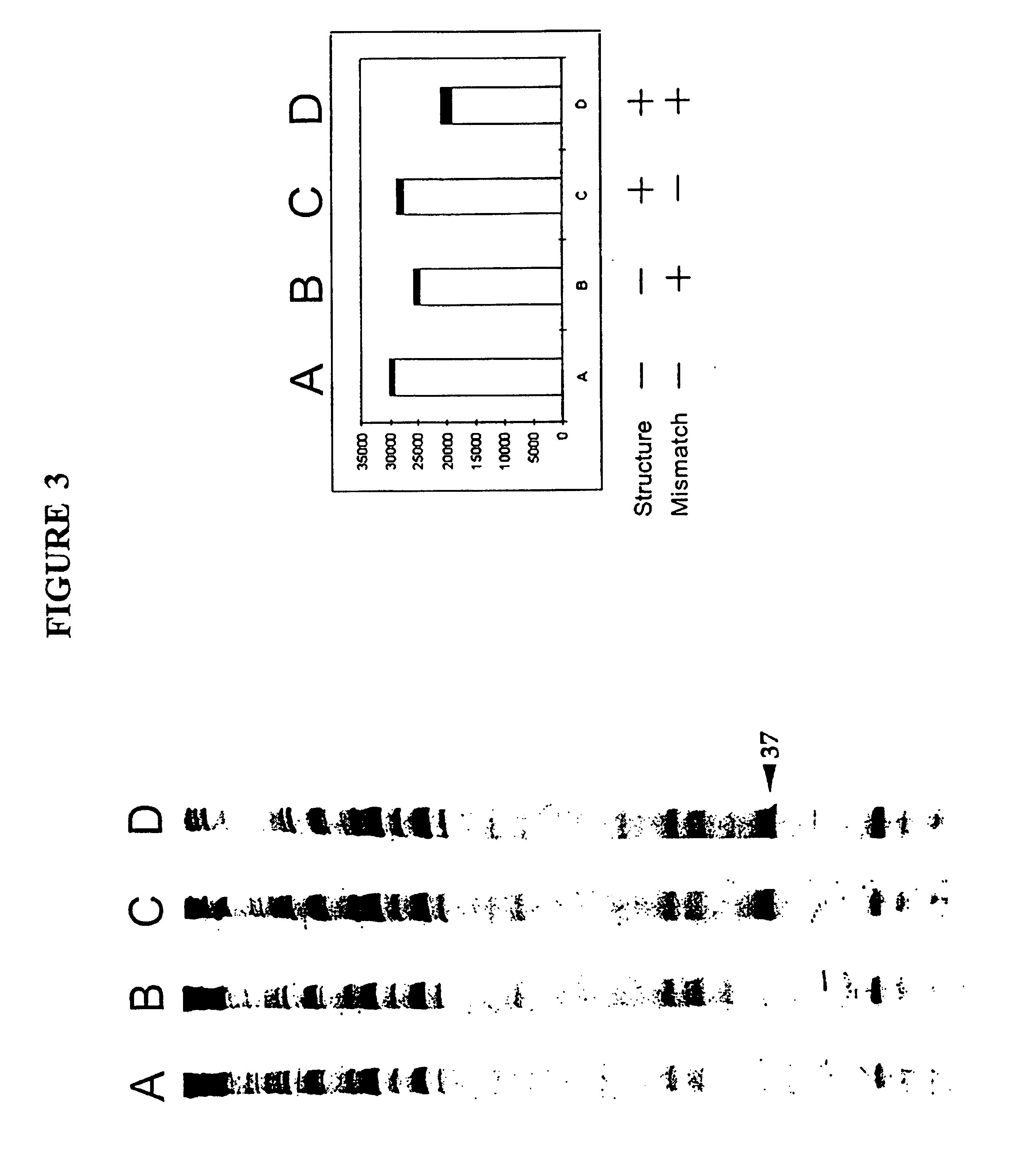Nucleic acid accessible hybridization sites
a nucleic acid and hybridization site technology, applied in chemical methods analysis, instruments, enzymology, etc., can solve the problems of lack of sensitivity, lack of sensitivity, and inability to be practical and effective in clinical settings, and achieve rapid detection and identification of variants.
- Summary
- Abstract
- Description
- Claims
- Application Information
AI Technical Summary
Benefits of technology
Problems solved by technology
Method used
Image
Examples
example 3
Hybridization Analysis Using Multiple Capture Probes for HCV Genotyping
[0472]Because both mismatches and structures are used in the method of the present invention for discrimination between similar nucleic acids by hybridization, the patterns created by the use of a structure specific nuclease, e.g., CLEAVASE I nuclease can be used as a way of selecting regions likely to demonstrate different binding behaviors with different variants. Because the CFLP method indicates the presence of structure in a DNA fragment of interest, and because the variations in the structures tend to be proximal to the actual sequence changes, choosing capture probes at or near the CFLP cleavage sites increases the probability of choosing a sequence that changes in accessibility in the different variants. FIG. 5 shows a diagram depicting this means of probe selection as applied to the comparison of fragments from the Hepatitis C virus. In FIG. 5, the left panel shows an fluoroimager scan of sequencing gel ...
example 4
Effect of Temperature on Structure Probing with Oligonucleotides
[0477]Most traditional hybridization methods have a small window of temperature (i.e., about less than 10° C.) in which to produce the expected discrimination between targets. The structure probing analysis of the four HCV subtypes (describe above) under different hybridization temperatures was performed to examine the effect of temperature on both the secondary structure of DNA and the stability of the probe / target complex. Three different temperatures were used; room temperature (approx. 20 to 25° C.), 37° C. and 50° C.
[0478]The profile of the HCV subtypes 1a, 1b and 3a are shown in FIG. 7. The profiles of the HCV subtype 1b are shown in FIG. 8B. The profiles of the HCV subtype 3a are shown in FIG. 8C. The hybridization profiles of these three HCV subtypes over a 25° C. range of temperature (˜25-50° C.) are shown in FIGS. 8A-8C (the numbers below each column indicates the capture probe employed; note the change in sca...
example 5
Structure Probing Analysis of HCV Clinical Isolates
[0479]Structure probing analysis of HCV clinical isolates at a room temperature hybridization temperature was performed to examine the feasibility of developing a diagnostic test for HCV genotyping. Twelve HCV amplification products generated from clinical samples were obtained (Molecular Pathology Dept, Univ. of Wisconsin Clinics, Madison, Wis.) and employed in the structure probe assay. These targets were RT-PCR products of viral RNA from different patient samples amplified using the Amplicor HCV detection kit (Roche Molecular Systems, Alameda, Calif.). Further PCR reactions were performed on these clinical amplification products using the primer pair described in Example 4 (SEQ ID NOS:24 and 25) to create ds PCR products comprising 5′ fluorescein labels on the anti-sense strands. The PCR conditions were as described in Example 4. The resulting HCV targets were employed in the structure probing assay which was carried out as descr...
PUM
| Property | Measurement | Unit |
|---|---|---|
| Wavelength | aaaaa | aaaaa |
| Wavelength | aaaaa | aaaaa |
| Wavelength | aaaaa | aaaaa |
Abstract
Description
Claims
Application Information
 Login to View More
Login to View More - R&D
- Intellectual Property
- Life Sciences
- Materials
- Tech Scout
- Unparalleled Data Quality
- Higher Quality Content
- 60% Fewer Hallucinations
Browse by: Latest US Patents, China's latest patents, Technical Efficacy Thesaurus, Application Domain, Technology Topic, Popular Technical Reports.
© 2025 PatSnap. All rights reserved.Legal|Privacy policy|Modern Slavery Act Transparency Statement|Sitemap|About US| Contact US: help@patsnap.com



